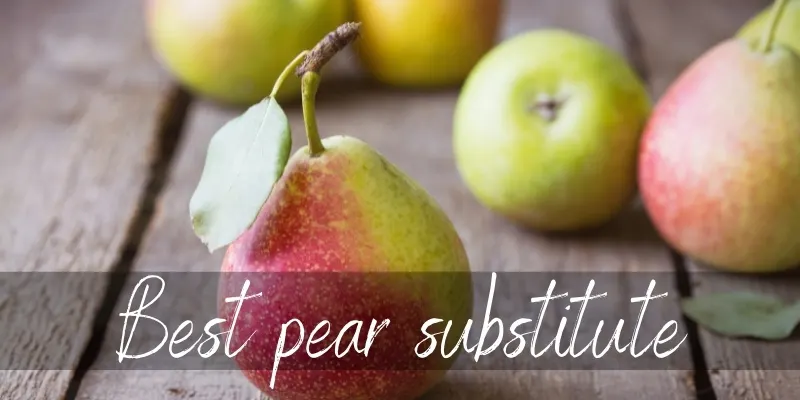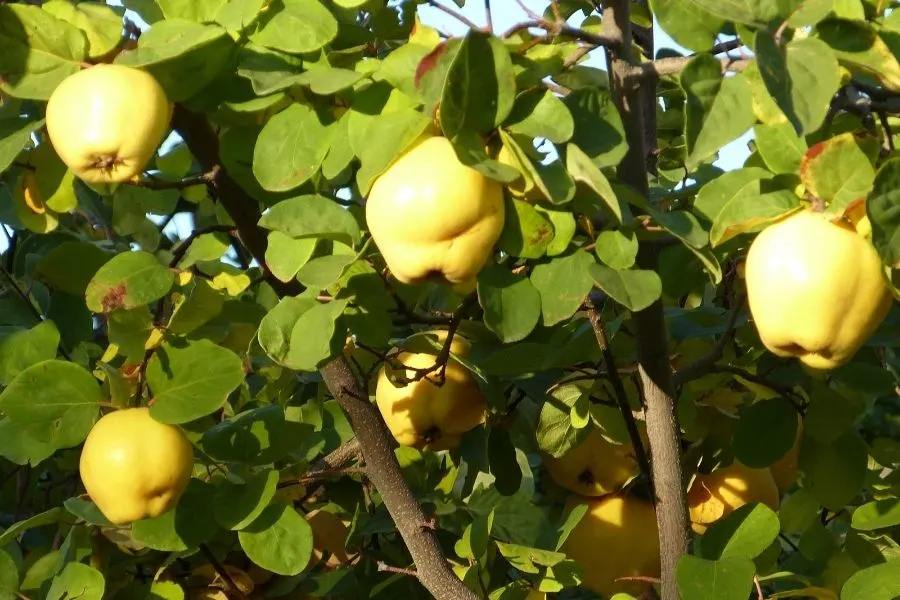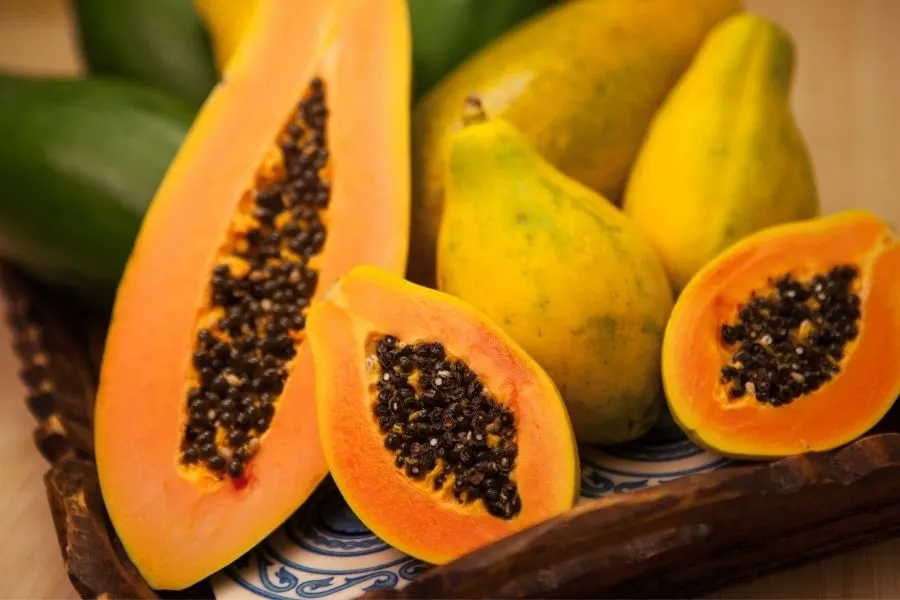So pear season has arrived, but you just can’t find any, all of them are already sold out. Or maybe you can’t stand the gritty texture of pears and would love a replacement. Whatever the case, you need a pear substitute, and we’re here to help.
Today we’re covering all the possible pear substitutes, with a separate section for Korean bulgogi. We’ve selected the substitutes by a combination of flavor, sweetness, texture, and juiciness.

Best pear substitutes
The best pear substitutes are apples, quinces, plantains, figs, white grapes, mangoes, pineapples, papaya, and pumpkin or butternut squash. All of these provide sweetness and texture and in some cases even the enzyme necessary to tenderize meat – like in papaya and pineapple.
Some may work better than others, depending on what you’re cooking and what kind of texture or finish you’re looking for. You can even sue several of these together, if you feel like it. Let’s take a closer look at them.
1. Apples, especially golden
You can use whatever apples you like, but to best replicate the mild sweetness of a pear we recommend you use golden apples. They’re the yellow, honey-sweet kind and they have almost no tartness at all. This brings them very close to what a pear would taste like, and they can be quite close in texture too.
As there are so many apple cultivars, you may also find ones that have been mixed with golden. Some of the examples are:
- jonagold (red and golden)
- gala apples (red but very mild and sweet)
- pink lady (mostly red, but soft and mild)
- Fuji (red and golden)
Read also: Why Are Pears Gritty ?
2. Quinces
Quinces may not be easy to find, but if you ever do, grab a couple and use them instead of pears. They’re very firm and dense, so they stand up to prolonged cooking or baking without turning to mush.
And they have their own pear-citrus kind of flavor, and it really comes to light when you allow them to ripen. Quinces look odd, a bit like a misshapen pear, but they’re delicious. They can make your lips pucker, not because they’re sour but because they may remind you of citrus pith when not 100% ripe.
Still, do give them a try if you ever find them.

3. Plantains
Plantains are a type of banana that is much less sweet, and definitely former than your everyday banana. These are meant to be cooked, either in savory or in sweet dishes. You can find them easily in most stores and supermarkets.
4. Figs
Figs are sweet and soft, and they work very well in anything: pies, sauces, jams, and fruit salads. What they don’t have is the juiciness of a ripe pear, but they may resemble strawberries with all those seeds.
5. White grapes
We’ve added white grapes because you have a higher chance of finding these sweet, rather than the red or purple ones. They’re good in a fruit salad, or in a sweet and savory one with cheese. They not really that great in pies or jams, they’re better on their own.
6. Mangoes
Mangoes are beautiful, fragrant, and nothing like a pear in terms of looks and flavor. But once they’re ripe they’re juicy in their own way, and very sweet. So you may actually find them a nice substitute for pears, even if they’re much bolder in flavor. These work best as a jam or fresh fruit, they don’t go that well in pies.
7. Pineapples
Pineapples are timeless, sweet, extra juicy, and go with almost anything (except pizza, we picked sides). The best thing is you can use the pineapple juice – fresh, raw pineapple juice – as a tenderizer for beef in bulgogi. It’s just as sweet as pear juice, but it tastes a little different.
8. Papaya
Papaya is also good in a bulgogi, just like pineapple. It may not be as sweet as a pineapple, but it’s definitely going to make for a good tenderizer. And you can throw in some papaya chunks when making a salad, they’re fairly mild yet sweet in taste.

9. Pumpkin or butternut squash
Now, pumpkin or butternut squash may not be your first option, and we know not everyone loves the taste. but if you’re in the dead of winter and don’t have that much fresh fruit around you, feel free to use this veggie-fruit instead.
Chopped up raw into cubes, cooked into a pie filling, made jam, or turned into a sauce, use it however you like.
Spices to help along the pear substitutes
Whichever pear substitutes you decide to use, you can help them along with a few herbs and spices to round out the flavor. Or, even if the flavor doesn’t remind you of pears, you can still turn it into a memorable taste experience. So let’s take a look.
Add a bit of freshly grated ginger
Ginger has a nice lavender-lemon scent, and tastes great and zingy when you add it to something. So if you add a small amount of fresh ginger to something, like quince or butternut squash, you can instantly lift the flavor. It will also be a little bit spicy, which some may like.
Cinnamon
The smallest dash of cinnamon can make a world of difference, especially if you’re trying to make baked or caramelized pears. Maybe you’re in a position where caramel is not an option, so instead add some depth with brown sugar (instead of white), and a small pinch of cinnamon.
Cardamom
Cardamom is a strong flavor and not everyone like it, that’s true. But a fresh cardamom pod can really turn things around. Do you like pumpkin spice ? Try to remove the cinnamon from that taste memory. You’re likely to find some cardamom there. It may remind you of star anise, or cloves.

